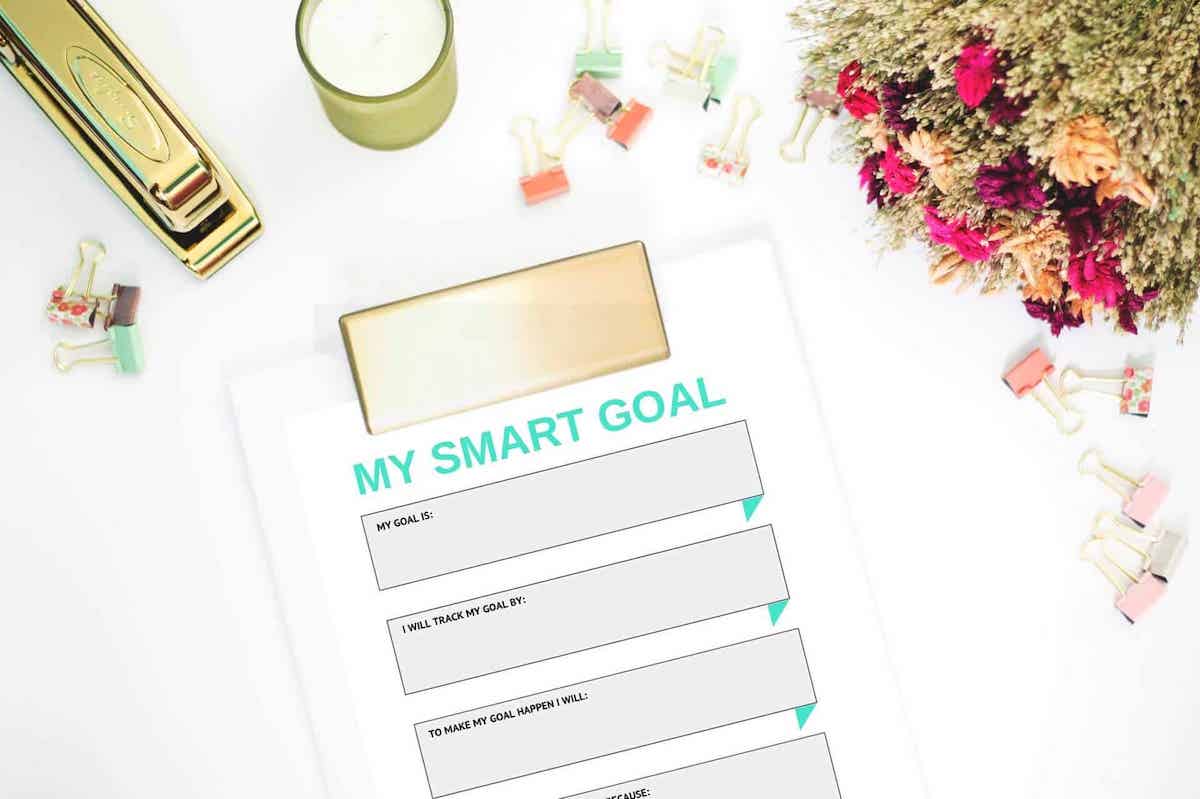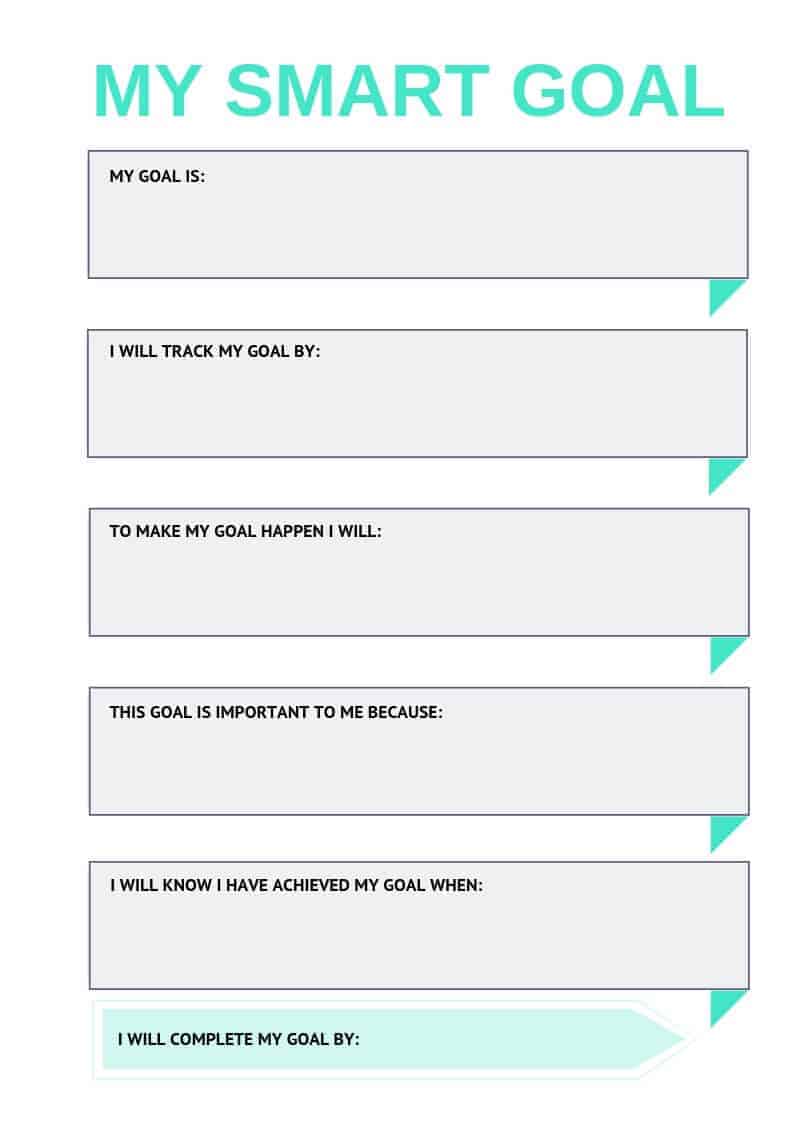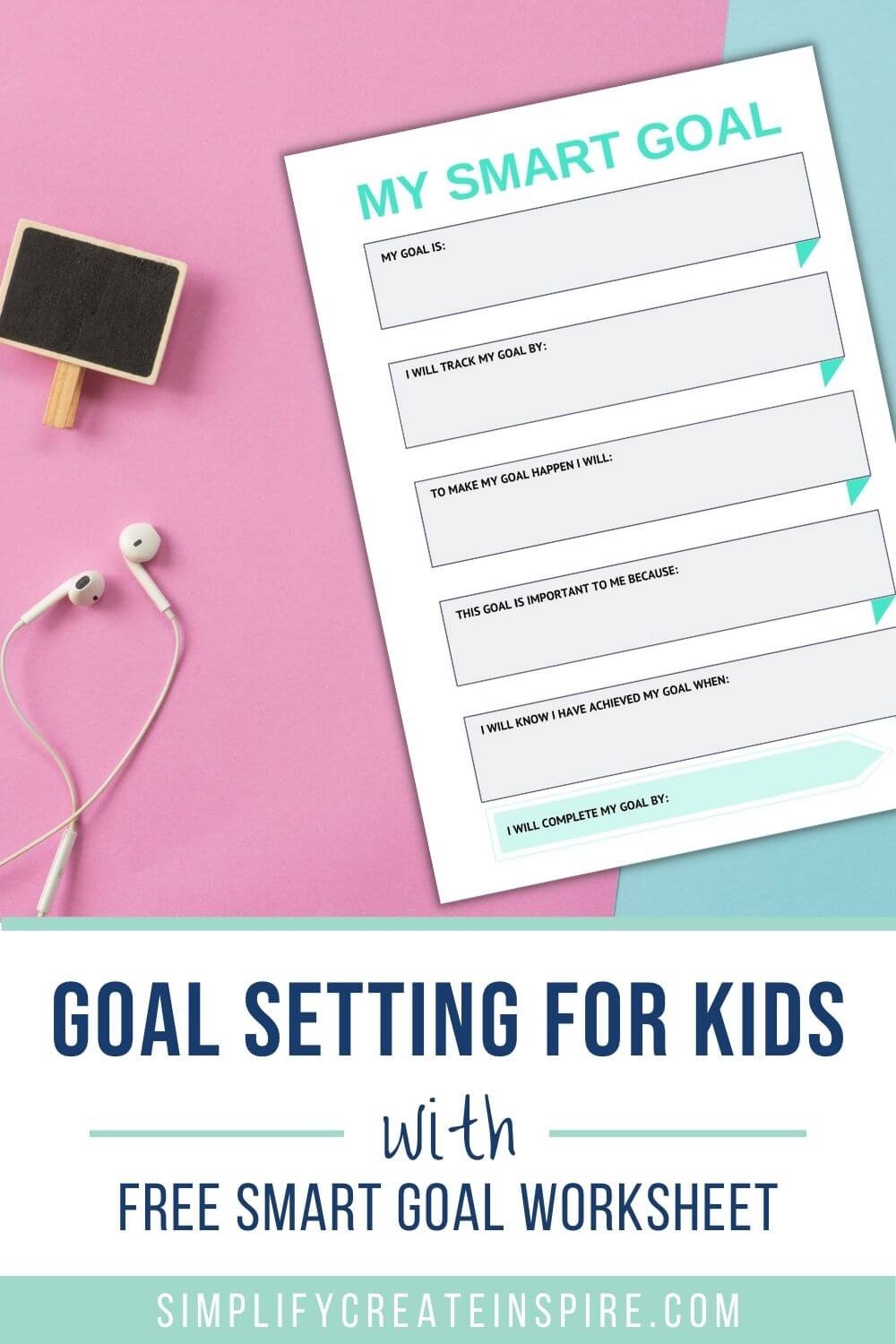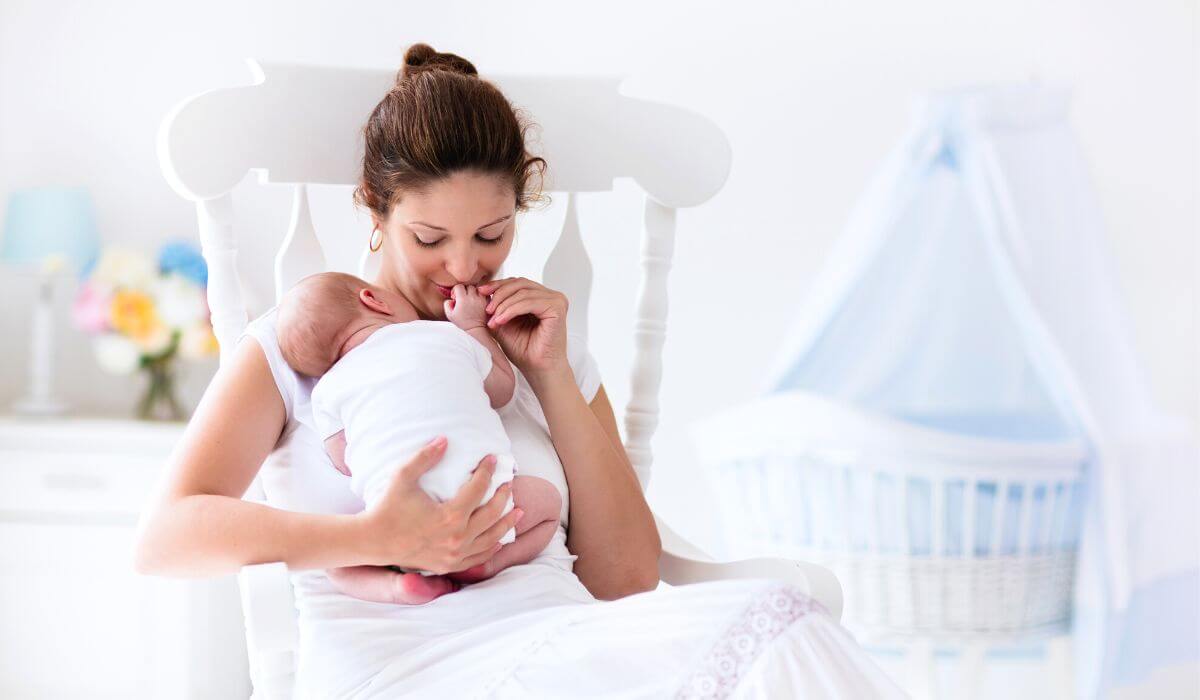How To Teach SMART Goal Setting For Kids | Free Goal Setting Worksheet
This post may contain affiliate links. Read the full disclosure
Setting goals is such an important habit to have, no matter what stage of life you are at! Goals keep us forward-focused and are the best way to encourage personal growth, which is why goal setting for kids is equally important as it is for adults!
SMART goals for kids is a great way to get children into the habit of creating realistic and achievable goals, no matter how big or small! Setting goals is a great growth mindset activity and personal development habit for all ages.
This guide will explore the benefits of creating goals and teach you how to use the goal-setting process with kids of all ages.

SMART GOAL SETTING FOR KIDS
In my many years of work as a psychologist, goal-setting exercises were a recurring theme, no matter if I was working with adults or children.
Defining goals and planning the steps is an area I love and it can bring about massive positive change for each individual.
Personally, I am always setting and reviewing goals in my business, my personal life and my relationships, from budget-related goals to health and fitness habits.
Teaching a goal setting practice to any individual who has not practised this before can take time.
Essentially, creating a specific goal is a brand-new behaviour and the key is teaching it in a way that makes it easy to comprehend. A visual always helps too – such as a worksheet!
Having the ability to set goals is an essential skill for anyone who wants to turn their various dreams into actual real-life experiences. This means knowing how to identify the action steps that help us towards success.
There is no one size fits all for goals. Each person has different motivations and aspirations.
And kids are no different, so find my best tips for helping children to set goals and develop a plan for achieving them with your support.
It can also be a great way to bond with your child by sharing a family goal or helping them achieve a personal goal.
Make sure you grab the free Smart Goals Worksheet for kids for help with these goal activities!
RELATED: Gratitude journals for kids
The Importance of Goals For Children
Kids benefit from motivation and personal development just as adults do.
Setting goals with kids is such an important way to help them build confidence in their own abilities, boost their self-esteem and improve their focus. It also helps to teach them responsibility, resilience and independence.
One of the biggest reasons to start goal setting with children early is to teach them accountability. It also teaches children perseverance. This is not something kids are naturally skilled at early on.
It is a skill that needs to be learned over time, so working on goal setting exercises with your child will help them to understand how to measure their progress and how their actions influence the outcomes that follow.
These skills will support your child in growing their self-worth and also encourage them to strive higher, stay motivated and improve their problem-solving skills, by setting them up with the basic skills they need to achieve the things they want in future.
It also reduces the impact of challenges such as shyness and low confidence that many children struggle with as a result of their personality differences.
It is also important to note that when teaching children to set goals, that small steps and smaller goals are just as important as a larger goal.
SEE ALSO: Age-appropriate chores for children with printable chore chart

What Are The Different Types Of Goals?
According to Jack Canfield and his book The Success Principals, there are 7 common types of goals. However, not all of these may apply to your child as yet, but for future reference, here they are:
- Career goals
- Financial goals
- Personal goals / personal development goals
- Spiritual goals
- Educational / Academic goals
- Relationship goals
- Physical and Health goals
Of these 7 types, the goal types that are typically most relevant to children are personal goals, educational or academic goals, and physical health goals, however, each of the other goal types will start to come into play as your child gets older and begins planning for their future.
Being able to have some idea of the type of goal they are setting will help with their planning skills as they strive to achieve goals.
SMART Goals Method

There is a good chance you may have already heard the term SMART goals before, as this is a goal setting theory that works great for all ages.
This is the goal method I have used in my work as a psychologist and this is a method I use personally, and when creating goals with children or adults.
So, what are SMART goals?
SPECIFIC
MEASURABLE
ATTAINABLE
REALISTIC
TIME BOUND
By using this method, you ensure your goal meets each of these criteria. This increases your chance of success and helps you to set up a plan for achieving your goal, rather than running on hope alone. As they say, a goal without a plan is just a dream!
SMART Goal Setting Questions
Use these questions to help you with setting SMART goals for kids with your child. By asking them these different questions, you help them to narrow their focus and also create the action steps they need to work towards their goals.
This is the part that kids need the most support with when setting goals, as they are still learning about cause and effect.
While they may have the ability to come up with their individual goals relatively easily, they may need help making their goals fit within the SMART requirements. Particularly around how long it will take to receive and putting an action plan into place.
S – Is it specific? What do you want to happen? What would you like to accomplish?
M – Is it measurable? How will you track your goal? How will you know when you have reached your goal? Who can help you?
A – Is it achievable? Is there anything that could stop you from reaching your goal? Have you set enough time to achieve this? Do you have the skills or tools you need?
R – Is it realistic? Why is this goal important to you? Why do you want to do this?
T – Is it time-bound? When will you complete your goal by? How long will it take you to achieve your goal?
You can use these same goal setting questions to help you set your own SMART goals as well. It is a great habit to get into by ensuring every goal you set meets these 5 criteria!
It will also help you to work out what the next steps are once you’ve identified a personal goal, since that end result may seem very daunting and overwhelming without smaller steps to help us get there.
Conversation starters for families can be helpful to get kids talking. Try these conversation starters for kids, teens, and couples, conversation starters for family dinner & Would You Rather questions for kids to get everyone talking!
Tips for Goal Setting With Children
Achieving goals takes hard work if we are setting goals that are encouraging us to stretch ourselves. Both short-term goals and long-term goals are an important part of development for children.
We also want them to feel empowered and confident enough to take the necessary steps to make their goals happen.
This is the case whether your child’s big goal is saving enough pocket money to save up for a new video game or if they are challenging themselves to achieve the next coloured belt at Jiu Jitsu before the end of the year.
Use these strategies and tips to help your child become a competent goal setter:
- Allow your child to take the lead – You are not responsible for setting goals for your child! Try to avoid influencing them with what you want them to achieve and instead let them be the ones to identify their goals. We are far more likely to be motivated by a goal we set ourselves than one set by someone else, no matter how tempting it is in wanting to lead them there. Be a guide only in helping them identify what they want.
- Write goals down – In a study by psychology professor Gail Matthews, it has shown that writing your goals down increases the chance of achieving them as it makes the goal more concrete. This is the same for children, so have them complete the goal exercise by writing down their goals. You can use my free goal setting PDF or if you don’t have access to a printer, have them write it down on a blank piece of paper and decorate it.
- Display their goals – This is such an important step with helping to keep your child motivated towards their goals. Stick it somewhere they will see it frequently, or where as a family you can all see it. It may be on the wall beside their bed, above their desk or somewhere else highly visible to keep them motivated and remind you to check in.
- Set achievable goals – Setting meaningful goals is a new skill for children so it is not uncommon for them to set massive goals that may be out of reach at this point in their life, such as becoming a pro footballer or saving 1 million dollars before they are 8.
- Narrow Their Focus – Big dreams are great and we don’t want them to be discouraged so instead of telling them those goals are impossible, ask them to narrow their focus on a smaller goal that could lead them closer to that big goal. It may be making the school football team or saving $50 from chores over the next 6 months. We want to give them confidence and build them up, so we want them to have goals that are within reach while maintaining a positive perspective on their giant, not-yet-in-reach goals.
- Be their biggest cheerleader – Kids thrive on positive reinforcement and encouragement. Praise your child when they take specific steps towards reaching their goals. This means praising the tiny steps in the beginning and then the bigger ones as they move forward. Check in on their progress and talk through with them if they are feeling doubt. We all need accountability and for children, you are their biggest source of accountability and support.
- Teach positive affirmations – Just as being your child’s support through their progress is essential, teaching positive self-talk around their goal can also help your child overcome any confidence roadblocks they encounter. Something as simple as, ‘I am getting stronger each day,’ is a simple positive affirmation for a sporting goal or ‘I am capable of getting an A’ for an academic goal, as an example.
- Use a visual representation – A goal worksheet is a great visual representation of your child’s goals and should be kept in a place where they can see it often, but it is also the benefit of breaking it all down on paper that can help.
- Share goals – Share your own goals with your children from a young age so they get familiar with the process of goal setting even when they aren’t focused on their own personal goals. When they see you setting realistic goals on your way to becoming your best selves, it can be a simple way to create good habits.
Free SMART Goal Setting Worksheet

A great way to get started on goal setting with kids is to use a simple goal setting worksheet. I have put together this free goal setting for kids worksheet that you can print off as often as you like.
Best of all, this free smart goals worksheet works just as well for adults or teenagers too, so print some extra copies off for yourself and the rest of the family!
This SMART goal setting worksheet will help your child answer the questions they need to turn their goal into an actionable plan and to simplify their goal-setting steps in a way they can understand.
This is a great activity to do with your child on a regular basis, whether it be for an academic goal, a savings goal or a skill-based goal.
Grab your free goal setting worksheet.

Other Goal Setting Exercises For Children
There are many ways of teaching goal-setting habits to young children and older children. These exercises will help children learn how to focus on their goals and work towards achieving them.
Picture Chart Tracker
One way to introduce goal setting to younger children is through the use of a picture chart or a habit tracker. This can be used for daily, weekly or monthly goals. Each day or week, the child gets to put a sticker on their chart when they have completed their goal.
The child feels a sense of accomplishment and pride as they see their progress towards their
Vision Boards
There are loads of ways you can get children thinking about goals. One of my favourite exercises aside from using a simple worksheet are to have them create a vision board.
You can grab some magazines for them to cut images from or print off photos relating to the things they want to achieve.
Vision boards are a really fun activity to do at the start of a new year, however, you can do one any time.
They may put inspiration on the grades they want to achieve, or places they want to visit. Savings goals are easily added to vision boards with images of what they are saving for. You can use a pinboard or just a sheet of cardboard with images glued on.
It can be really simple!
Character Traits
For younger children, try watching one of their favourite shows with them or reading a book they love together and then asking them what they like or admire about their favourite characters.
This can be a great way for them to identify habits or personality traits they wish to have, such as being kind to others or being brave.
Family Bucket List
For a fun goal activity for the whole family to get involved in, why not try creating your own family bucket list. This is a fun way for every member of the family to have input into places they want to go and experiences they want to have.
Make sure you add a few short term goals that fit into your family bucket list so you can easily mark them off your list in the near future. This is more of an indirect goal activity that still gets kids into that mindset of what they want to accomplish.
Savings Jar
This is a great activity for older children who are working on saving money for a specific goal. They can set up a savings jar and each time they receive money, they put some of it into the jar. This could be from allowance, gifts or other sources of income.
They can then watch their savings grow over time and feel a sense of accomplishment as they get closer to their goal.
A spend save give money box is a great way to remind kids of the value of giving to others also.
Read more tips on helping your child to build confidence and self-esteem.
Do you and your family set regular goals? I would love to hear what some of your current goals are, so make sure you drop a comment below!






![No-Stress Guide For Back To School Essentials [2025] 9 Essential school supplies for kids](https://www.simplifycreateinspire.com/wp-content/uploads/2020/01/1000x667-1.jpg)



Would love to get the Free SMART Goal Setting Worksheet but the link doesn’t seem to be working. Such a great post thank you for sharing, hope it works soon. :)